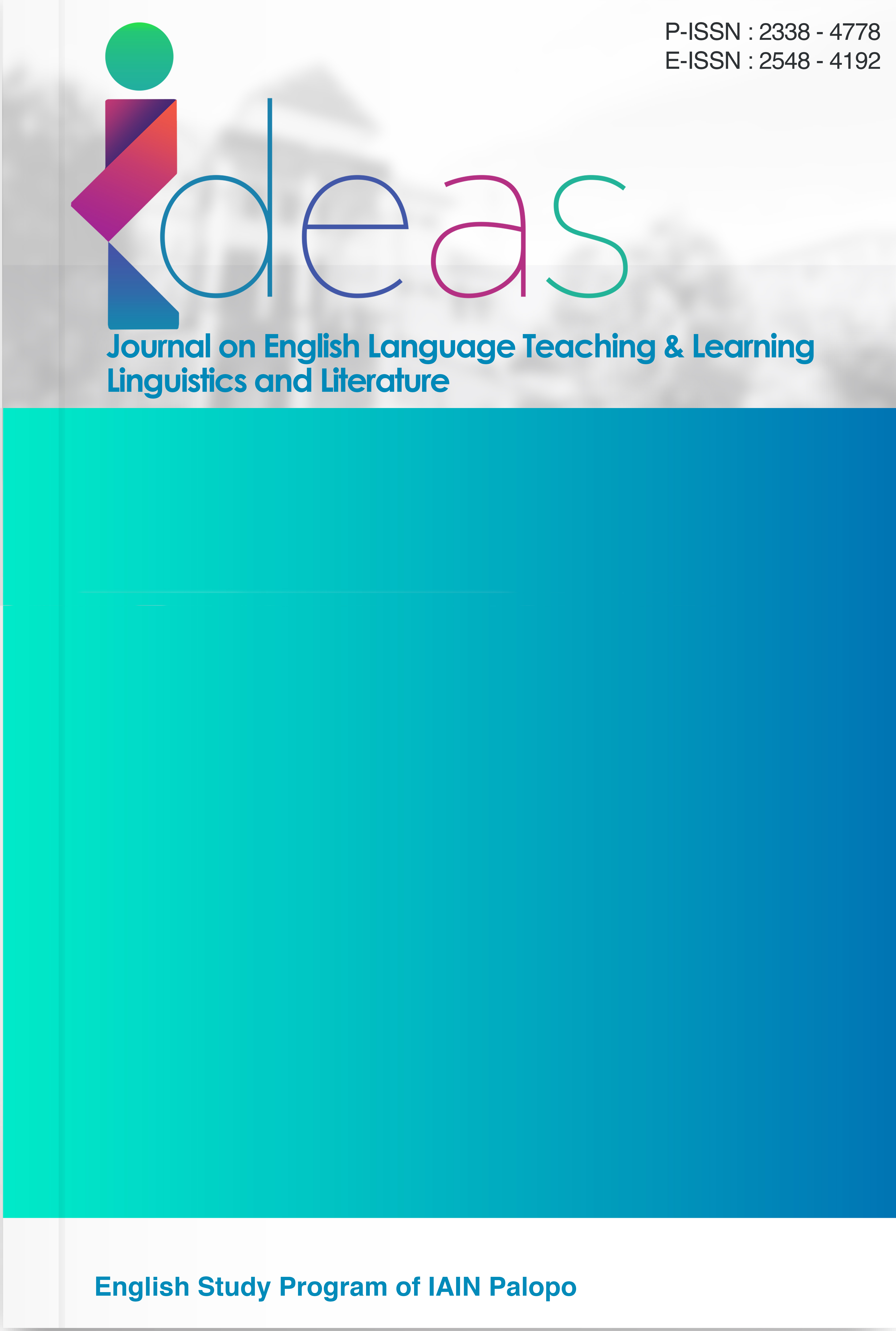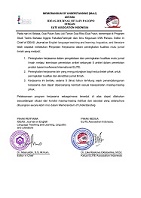Semiotic Analysis of The Logo and Sign Posts as Found in PT KAI Medan 2024
DOI:
https://doi.org/10.24256/ideas.v13i2.5077Keywords:
PT Kereta Api Indonesia (KAI), Medan Station, semiotics, logo, directional signs, Peirce's theory, visual communication, user experienceAbstract
This research focuses on a semiotic analysis of the logo and directional signs at the PT Kereta Api Indonesia (KAI) Medan Station. Utilizing Peirce's theory, this study identifies nine semiotic sign elements emerging from the analysis, with symbols dominating as the most frequently occurring element. The logo of PT KAI Medan, characterized by the use of dark blue color and a line crossing the letter "A," symbolically represents stability, professionalism, and reliability of the company, while directional signs within the company's environment are strategically positioned to provide clear information to station users. This research provides a profound understanding of the use of semiotic signs in assisting station users' navigation and offers a foundation for further research on the effectiveness of semiotic sign usage in the context of public transportation and its impact on user experience.
References
dan, i., dalam, s., anak, c., & wulandari, s. (2020). Titian: jurnal ilmu humaniora vol. 04, no. 1, juni 2020. 04(1), 29–41.
Desogus, p. (2019). The encyclopedia in umberto eco ’ s semiotics the encyclopedia in umberto eco ’ s semiotics. January 2012. Https://doi.org/10.1515/sem-2012-0068
Eco, sign. (2022).
Hendro, e. P. (2020). Simbol : arti , fungsi , dan implikasi metodologisnya. 3(2), 158–165.
Lexy j. Moleong, m. P. K. (n.d.). Neong muhadjir, metode penelitian kualitatif, (yogyakarta :rake sarasin, 1990 ) h. 60 lexy j. Moleong, metodologi penelitian kualitatif (bandung : pt remaja rosdakarya) h. 6. Neong muhadjir, metode penelitian kualitatif, (yogyakarta :rake sarasin, 1990 ) h. 60 lexy j. Moleong, metodologi penelitian kualitatif (bandung : pt remaja rosdakarya) h. 6, 49–57.
Manik, s., tampubolon, s., & padang, i. (2022). A semiotic pragmatic analysis of signs on billboard. 11(1), 367–377.
Masruddin, M., & Nasriandi, N. (2022). Lexical and Syntactical Errors Performed by Junior High School Student in Writing Descriptive Text. IDEAS: Journal on English Language Teaching and Learning, Linguistics and Literature, 10(1), 1094-1100.
Masruddin, M., Amir, F., Langaji, A., & Rusdiansyah, R. (2023). Conceptualizing linguistic politeness in light of age. International Journal of Society, Culture & Language, 11(3), 41-55.
Pamungkas, b. A., agung, a., agung, g., & mataram, u. B. (2022). Logo sebagai media komunikasi teknologi : analisis semiotika pada logo meta. 3(2), 67–74.
Romdhoni, a. (n.d.). Semiotika morris dan tradisi penafsiran alqur ’ an : sebuah tawaran tafsir kontekstual. 9867.
Semiotika, a., & sanders, c. (2017). Representasi nilai toleransi antarumat beragama dalam film “aisyah biarkan kami bersaudara.”
Semiotika, a., sanders, c., hartono, d., & sugalih, a. (2019). Makna simbol senyum pada iklan lay ’ s di televisi meaning of smile symbols on lay ’ s ads in television ( semiotics analyisis of charles sanders pierce ). 3(1), 39–49.
Semiotika, t., sanders, c., & sanders, c. (2009). Charles sander pierce. 14–27.
Somantri, g. R. (2005). Makara human behavior studies in asia memahami metode kualitatif. 9(2), 57–65.
Stanlaw, j. (2020). Morris, charles w. 1–2. Https://doi.org/10.1002/9781118786093.iela0279
Teori, m., & pierce, s. (2018). Analisis iklan produk shampoo pantene. 9(4), 201–208.
Wardani, l. K. (n.d.). Sebuah konsepsi dan aplikasi simbol. 17–24.
Wulandari, s., jambi, u., & siregar, e. D. (2020). No titlekajian semiotika charles sanders pierce: relasi trikotomi (ikon, indeks dan simbol) dalam cerpen anak mercusuar karya mashdar zainal. Https://doi.org/10.22437/titian.v4i1.9554
Downloads
Published
Issue
Section
Citation Check
License
Copyright (c) 2025 Lasma Duma Lestari Hutauruk, Sondang Manik, Rony Arahta Sembiring

This work is licensed under a Creative Commons Attribution-ShareAlike 4.0 International License.
Authors retain copyright and grant the journal right of first publication with the work simultaneously licensed under an Attribution-ShareAlike 4.0 International (CC BY-SA 4.0) that allows others to share the work with an acknowledgement of the work's authorship and initial publication in this journal.
Authors are able to enter into separate, additional contractual arrangements for the non-exclusive distribution of the journal's published version of the work (e.g., post it to an institutional repository or publish it in a book), with an acknowledgement of its initial publication in this journal.
Authors are permitted and encouraged to post their work online (e.g., in institutional repositories or on their website) prior to and during the submission process, as it can lead to productive exchanges, as well as earlier and greater citation of published work (See the Effect of Open Access)




